Micro Plate Heat Exchangers. In this article we’ll be looking at the new and ultra efficient Micro Plate Heat Exchangers. We’ll look at how they work and their purpose within refrigeration systems such as chillers and heat pumps. Scroll to the bottom to watch the video tutorial
The new Z-design Micro Plate Heat Exchanger delivers 40% higher heat transfer and decreased energy consumption. It’s also compatible with numerous refrigerants, making it easy to integrate into new system designs or retrofit older equipment.
Learn more about the new Z-Design MPHE here
Lets recap on the basics of heat exchangers and their purpose. The purpose of heat exchangers, in general terms, is to allow thermal energy to transfer between two fluids, without the fluids coming into direct contact with each other. The fluids can be anything, oil, water, refrigerant, milk, steam etc although for this video we will primarily focus on Micro Plate Heat Exchangers and their application within heating and cooling systems for buildings which use water and refrigerants.
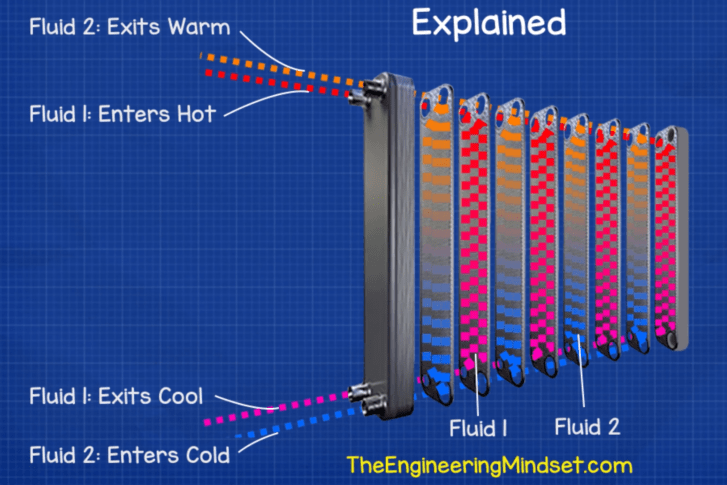
Micro Plate Heat exchangers are plate heat exchangers which can be used for the evaporator and the condenser, for example within chillers and heat pumps.
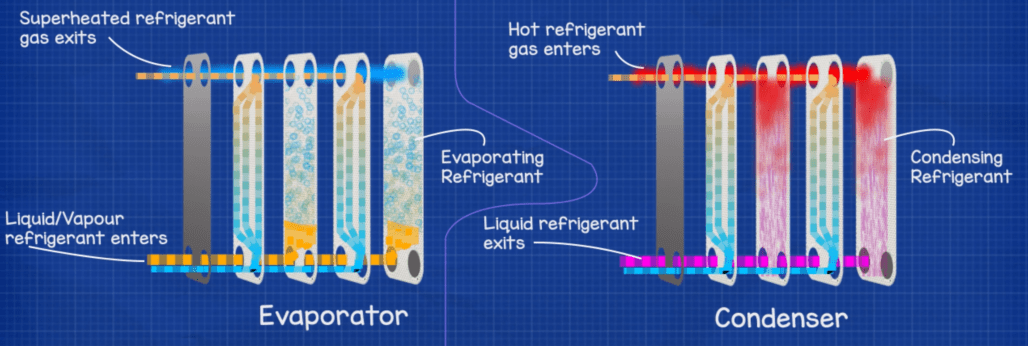
When used for an evaporator the vapour liquid mixture enters the bottom of the heat exchanger where the thermal energy is transferred into the refrigerant which causes it to boil and evaporate, this then leaves through the top of the heat exchanger with some degree of superheat.
When used as a condenser the hot refrigerant gas enters the top of the heat exchanger where it begins to transfer its thermal energy out of the refrigerant and into the secondary fluid which cools the refrigerant down and causes it to condense into a partly sub cooled liquid state.
Traditionally shell and tube heat exchangers were used, and they still are for certain applications, but then along came the invention of the plate heat exchanger which is a much more compact and efficient heat exchanger. These can come in either gasket or brazed plate variations.
Plate heat exchangers use thin sheets of metal, known as plates, to separate the fluids and create separate channels for the fluids to flow through and exchange their thermal energy. For this thermal transfer to take place, two fluids are used, a primary and a secondary, which both enter and exit through different ports. The fluids must be at different temperatures, the greater the temperature difference then the higher the heat transfer will be. The two fluids will never meet or mix, they are always separated by the plates of metal and the thermal energy flows between them, passing through the plates material.
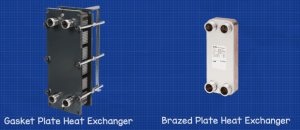
As I mentioned there are two types of plate heat exchangers, gasket and brazed plate.
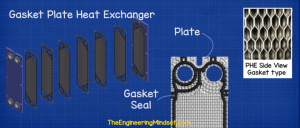
Gasket plate heat exchangers use a rubber gasket to separate the plates and form a seal which directs the fluids into certain channels as well as preventing the fluids from entering other channels which prevents the fluids from coming into direct contact with each other. This type of heat exchanger can be dismantled for cleaning and additional plates can be added or removed to increase or decrease the heat transfer capacity rating.
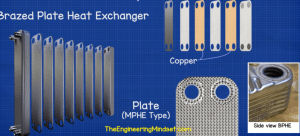
Brazed plate heat exchangers on the other hand also use the thin plates which create channels for the fluids to pass through, however they do not use gaskets, they are braze welded, typically using copper. During the brazing process all the surfaces which physically touch another surface will form a weld along that connecting edge. By orientation the plates, permanent seals are created which direct the flow of the fluids and prevent them from coming into direct contact. Brazed plate heat exchangers can’t therefore be dismantled for cleaning and no plates can be added or removed however brazed plates can still be flush cleaned and because they do not use gaskets they are very unlikely to leak, where as gasket plate heat exchangers have a higher possibility although with good maintenance this shouldn’t occur.
Traditionally plate heat exchangers would use grooved plates which have V shaped patterns pressed into them of different variations.
Then came along the Micro Plate Heat Exchangers which are the next evolution of plate heat exchangers and the latest in heat exchanger technology. They have been designed with energy efficiency and sustainability in focus.
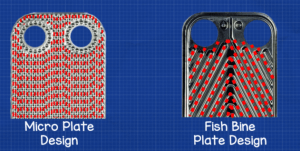
Rather than using traditional grooved or chevron plates, micro plate heat exchangers use small dimples. There are a number of reasons why this is a great design firstly because the dimples spread the fluids across the surface of the heat exchanger much more evenly, this maximises the heat transfer surface area which means there is more time for heat to transfer across between the fluids, the dimples also cause the fluids to move very turbulently because the dimples cause the fluid to change direction far more compared to the typical chevron patterns.
The reason turbulence is good for heat exchange is because when fluids flow smoothly, which is known as in a laminar flow, the fluid flows in layers with the outer most layer moving the slowest and the centre most layer moving the fastest. Heat is then transferred only into the outer most layer. The fluid in the centre can pass straight through and will carry little to no heat away. This means you’ve paid to pump a fluid through the heat exchanger but the fluid wasn’t able to pickup much heat, so you need to pump even more through to try and transfer it.
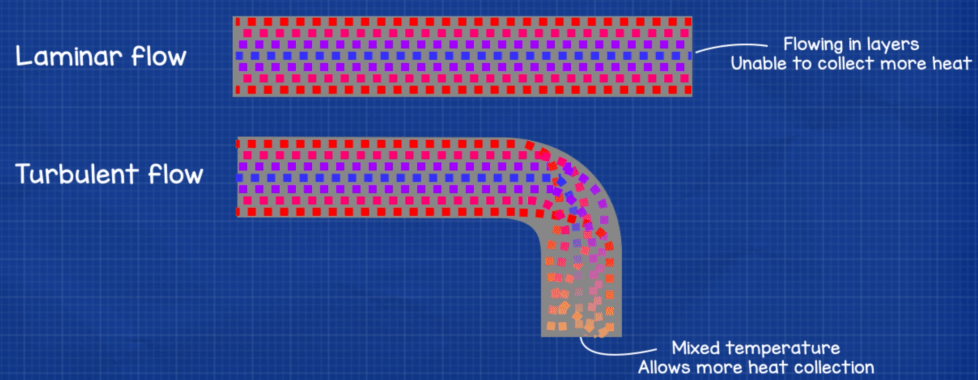
However, Turbulent flow causes these layers to mix and that forces the heat into the centre of the flow so it will be carried away allowing for more heat to transfer over so the efficiency of the heat exchanger is greatly improved. The size, spacing and shape of the dimples plays a critical part in the efficiency so these are specifically designed for the application and required heat transfer rate as well as pressure loss. For example, there are specifically designed heat exchangers for evaporators and condensers of heat pumps, chillers or general-purpose heat exchangers like waste heat recovery, perhaps from a data centre to a district heating system. Depending on the application you can get them in anything from 3kW up to and over 400kW and depending on the application they can be either brazed plate or gasket.
The heat exchangers also use counter flow design, meaning the two fluids flow in the opposite direction, to increase the heat transfer rate and Log mean temperature difference (LMTD) which results in less heat transfer area being required, meaning the heat exchangers can be smaller.
Like any plate heat exchanger, the purpose of micro plate heat exchangers is to transfer heat from one fluid to another, not to the ambient air and surroundings. A lot of people forget this and do not insulate their heat exchanger which just wastes energy. For example, If you’re using these for a cooling application then it has cost money to generate the chilled water and if you don’t insulate your heat exchangers then it’s going to pick up waste heat before its even reached its destination to provide air conditioning. If you see a plate heat exchanger that has exposed surfaces then get it insulated, check with the manufacturer they should be able to provide an insulation panel with the exact measurements of your heat exchanger and these can be quickly and easily removed should you need to perform maintenance, this will increase its efficiency.
Also, most plate heat exchangers come with bracket fittings. These are there to reduce stress on the connections to prevent damage and leaks so if your heat exchanger has these then you should use them.
Some of the benefits of using Micro Plate Heat Exchangers are
- Reduced refrigerant volume, the heat exchangers are smaller so your system needs less refrigerant.
- The improved flow means pressure loss is kept to a minimum, so the process requires less energy to pump water around the system.
- The heat exchanger has a higher mechanical strength
- Provides a stable evaporation process
- Longer system life span
- Quick and easy install
- Smaller and light weight, less raw materials, less environmental impact
- Higher heat transfer rate, up to 40% more compared to traditional fishbone design brazed plate heat exchangers.

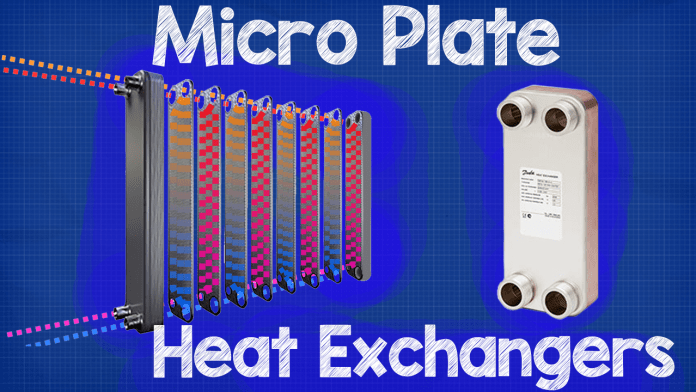


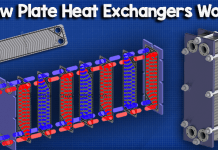
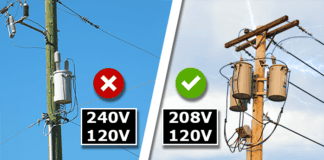
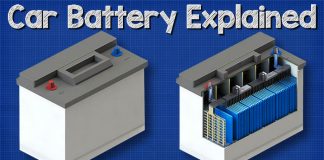
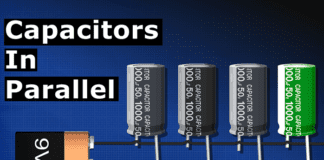

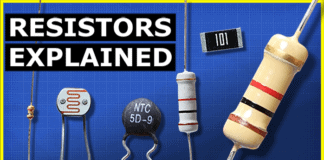









This is a great presentation. Thanking you for this knowledge.
[…] de energía térmica, para una eficiencia aún mayor y un diseño compacto, puede usar intercambiadores de calor de microplacas para muchas aplicaciones. Hemos cubierto todos estos intercambiadores de calor en […]